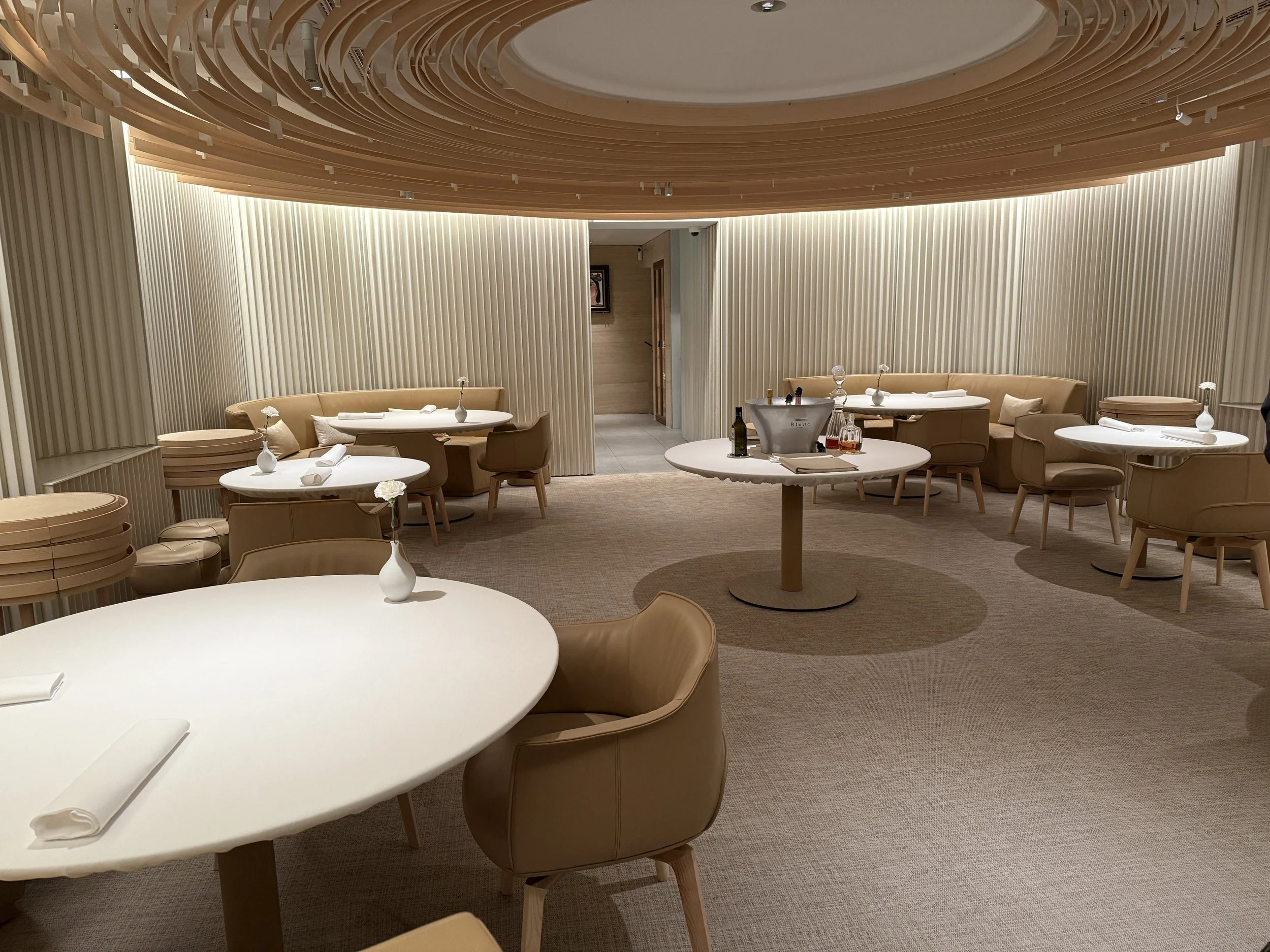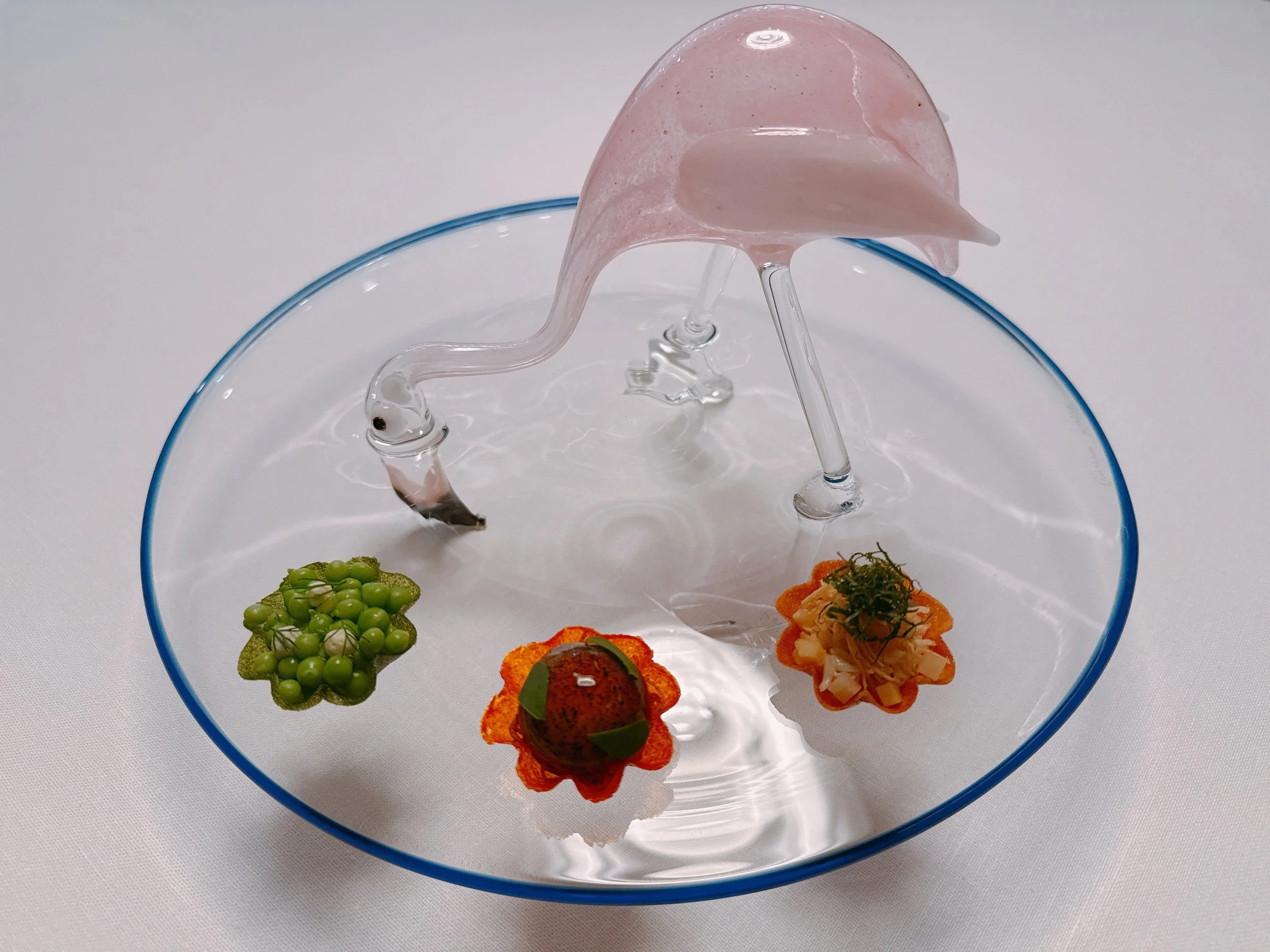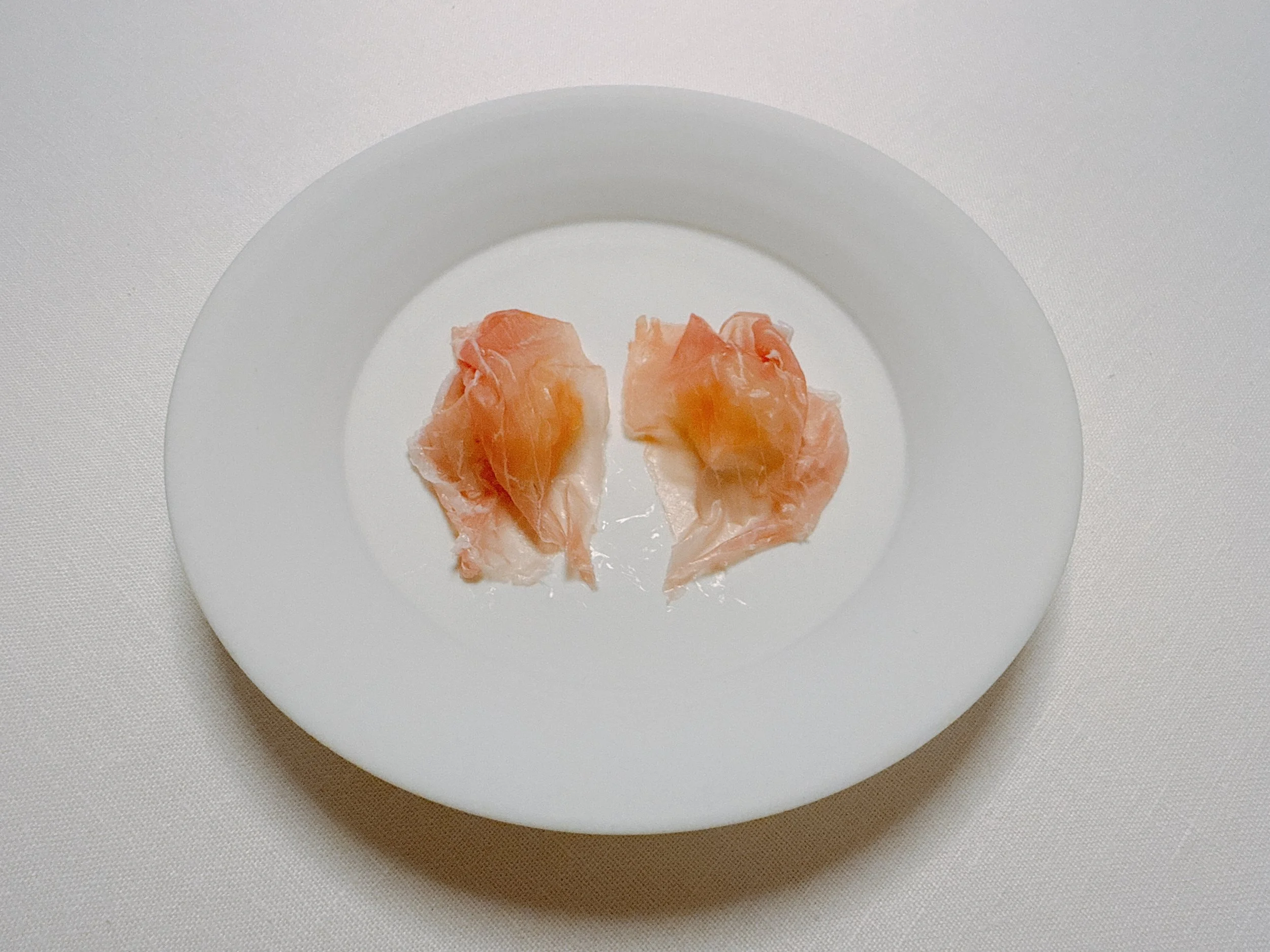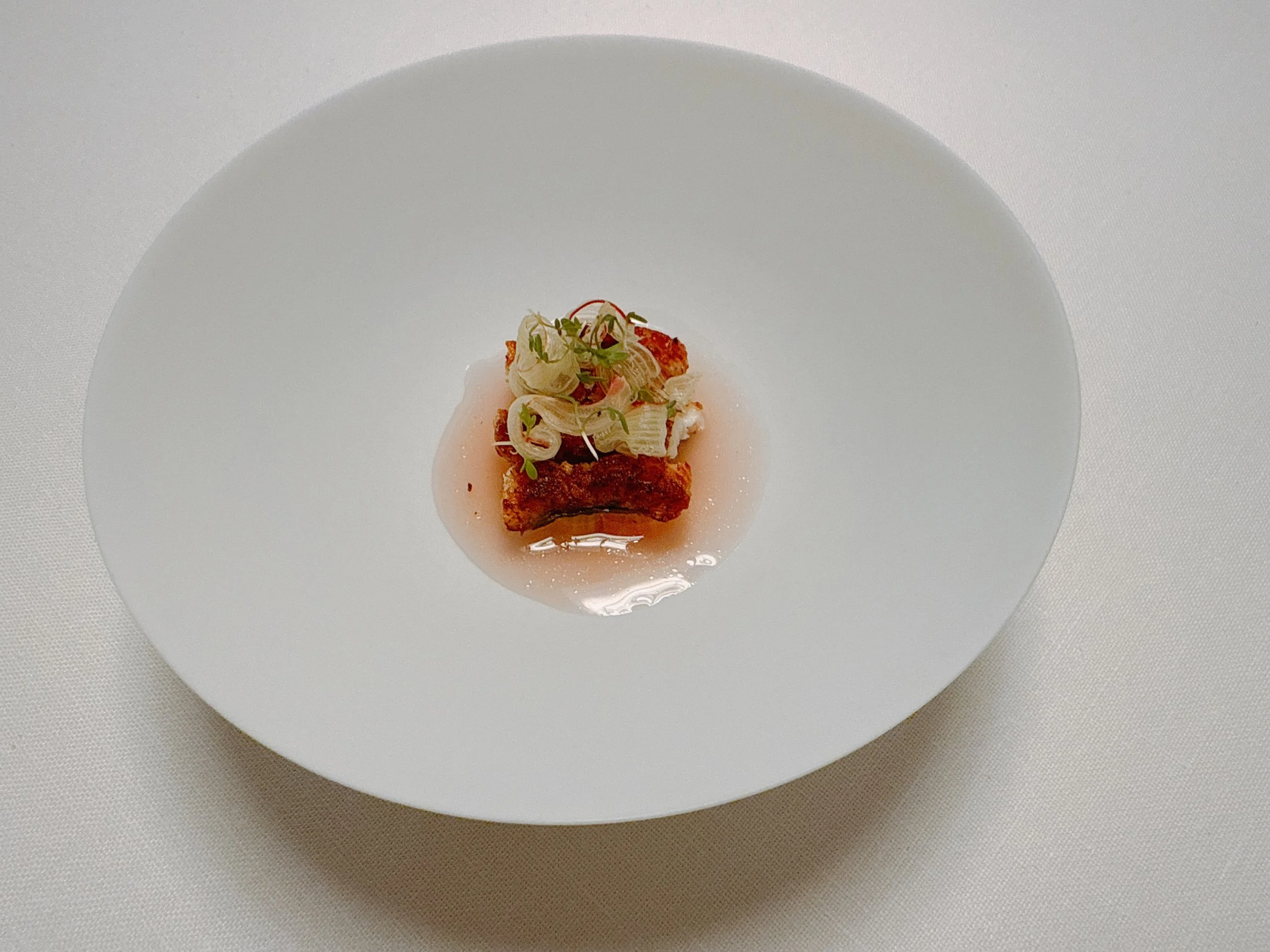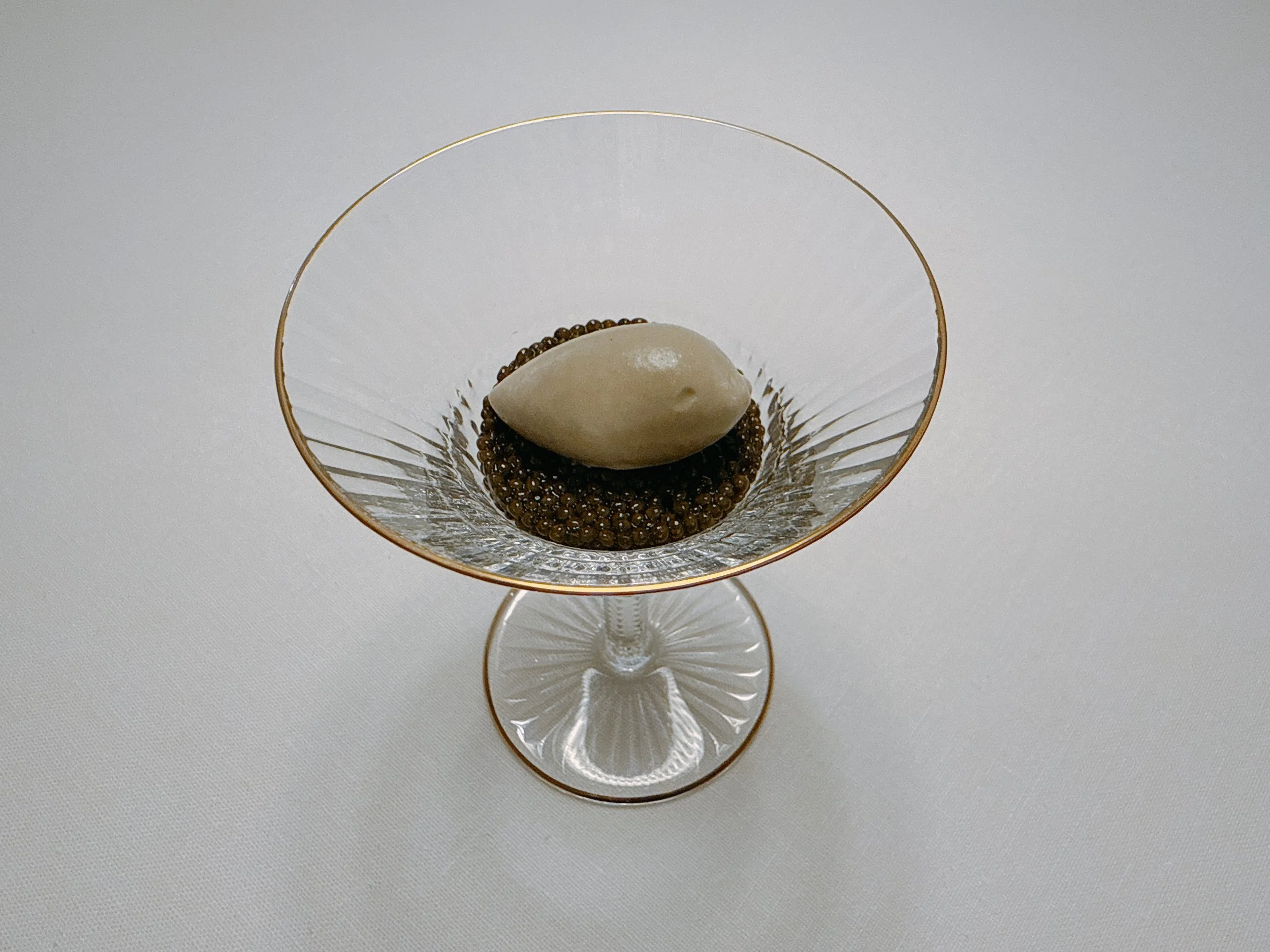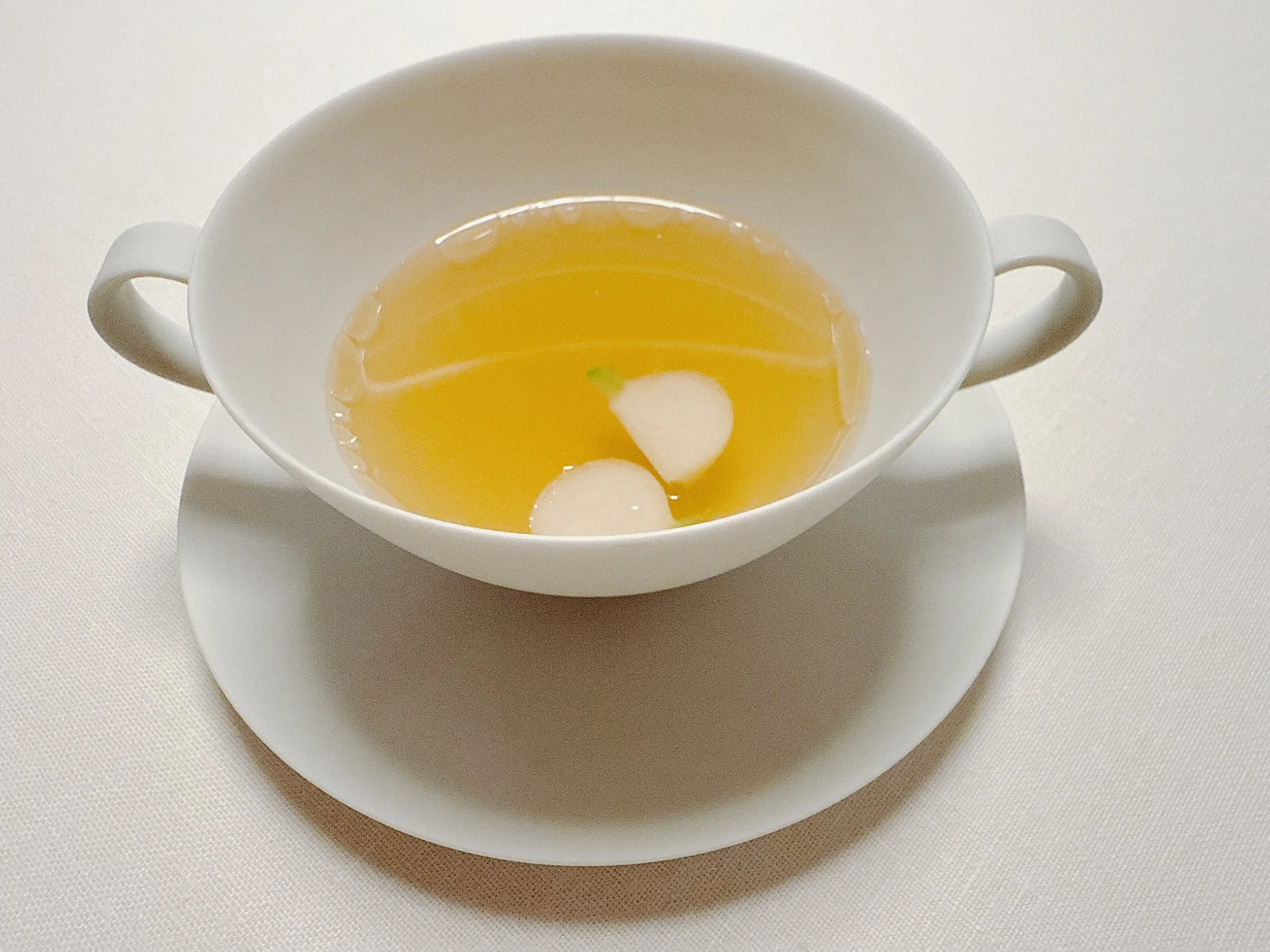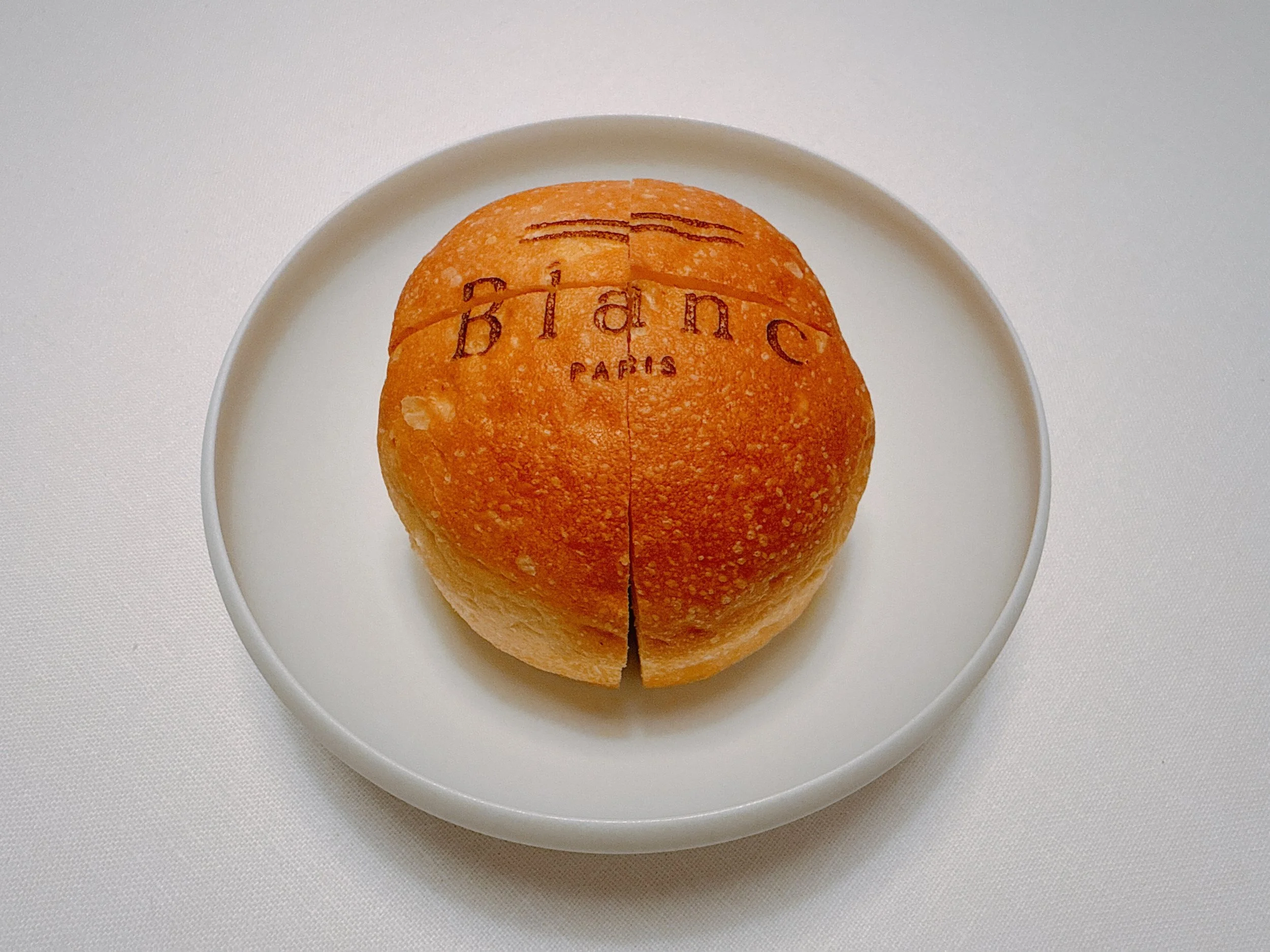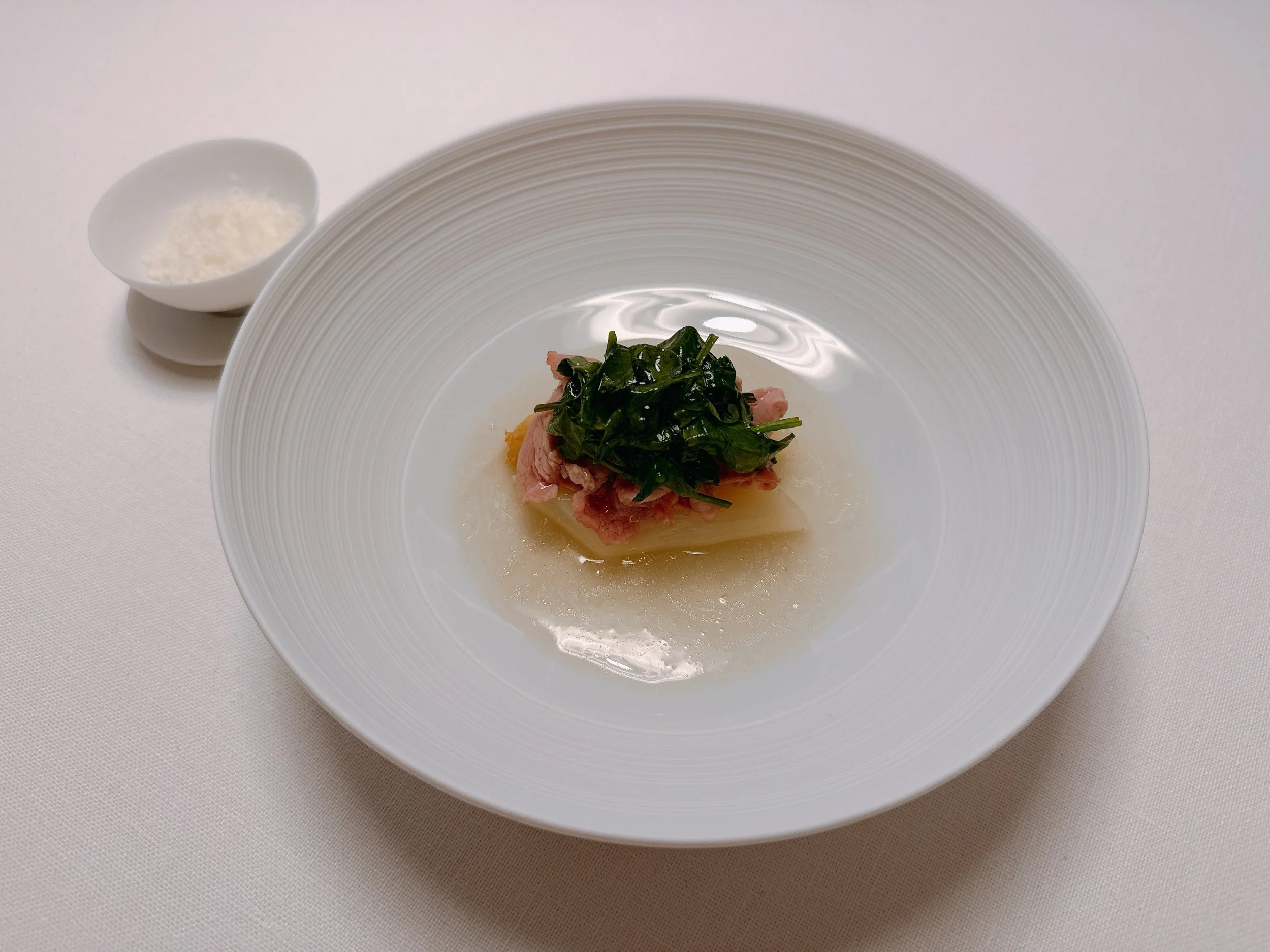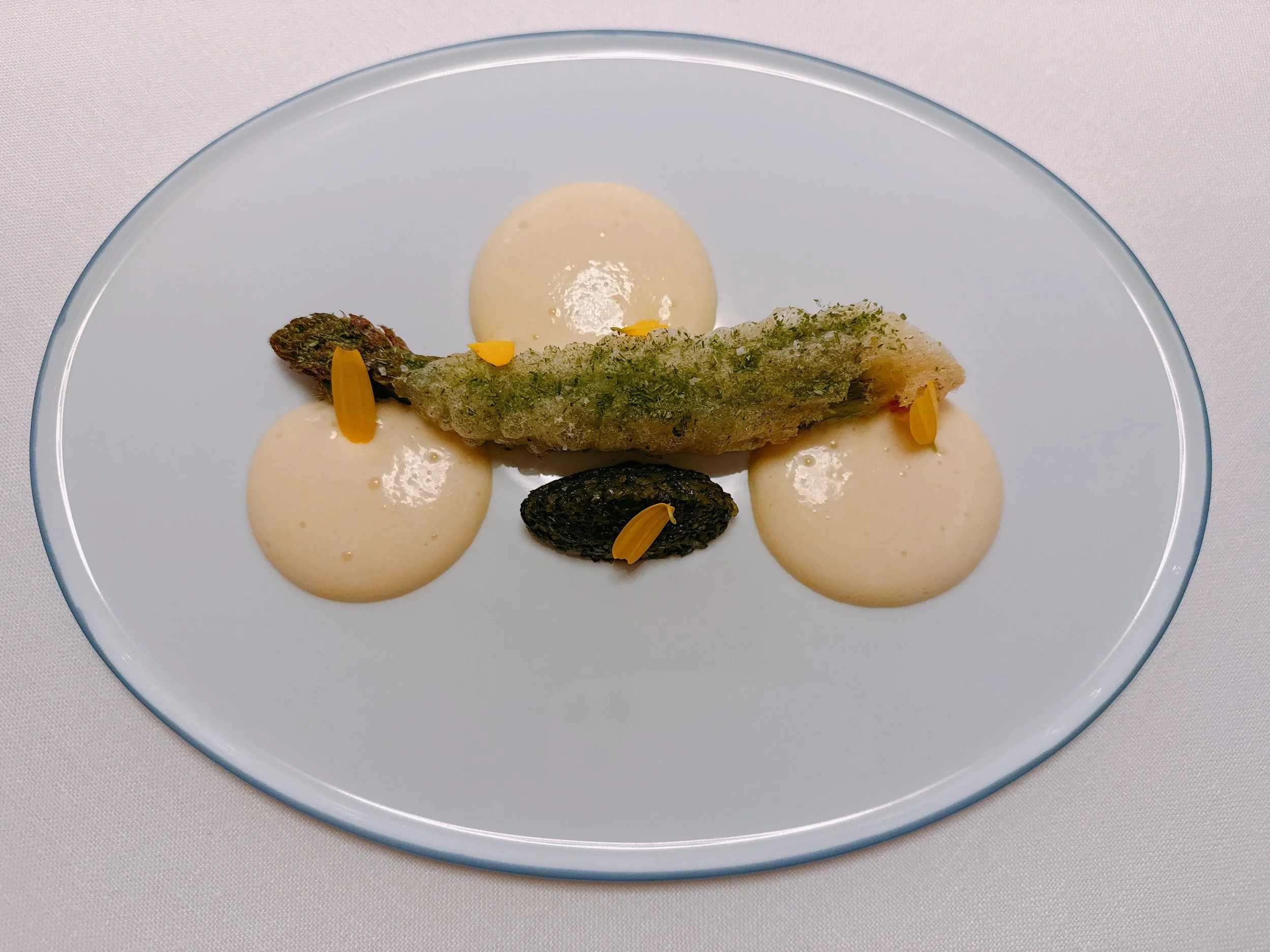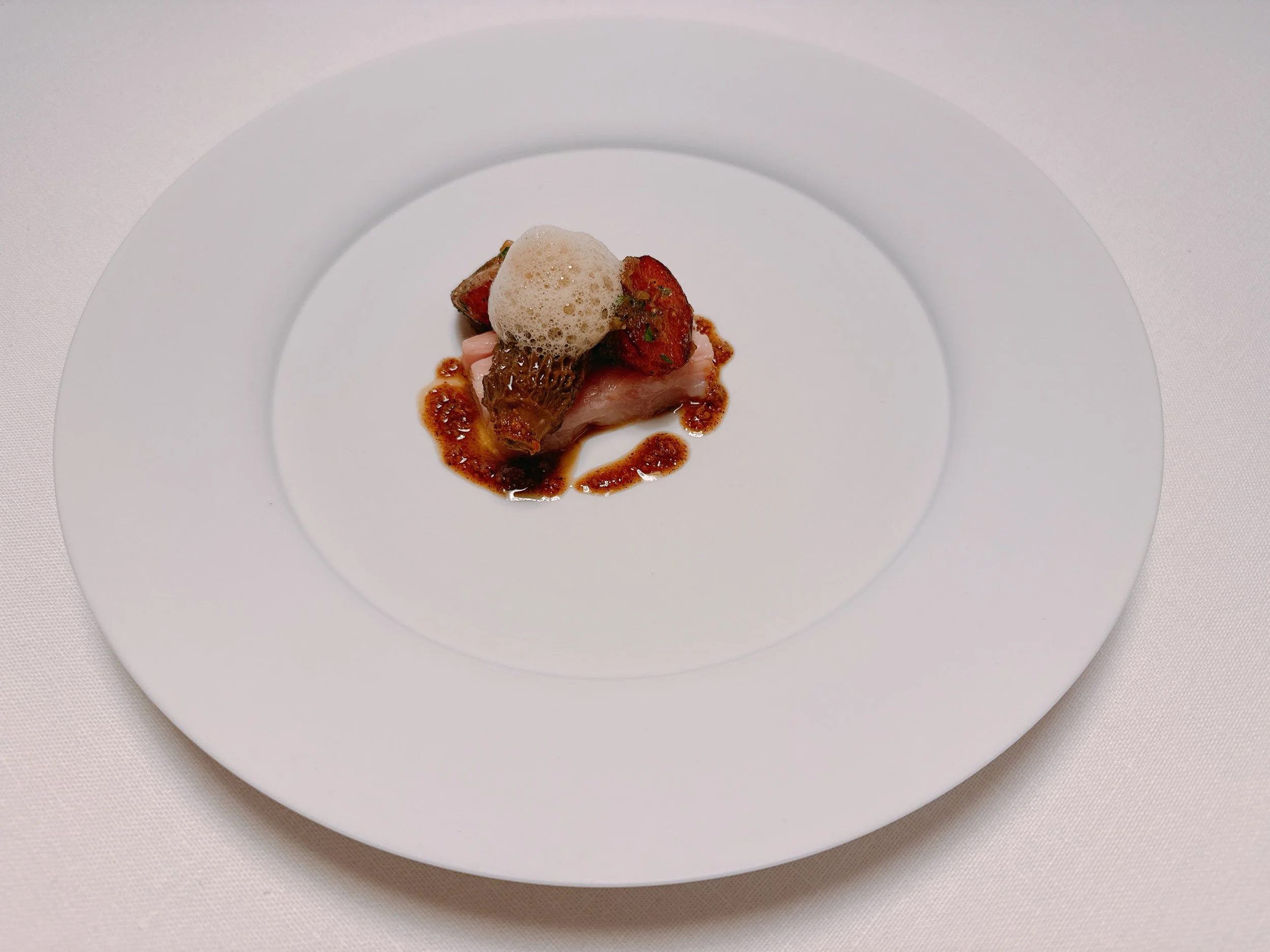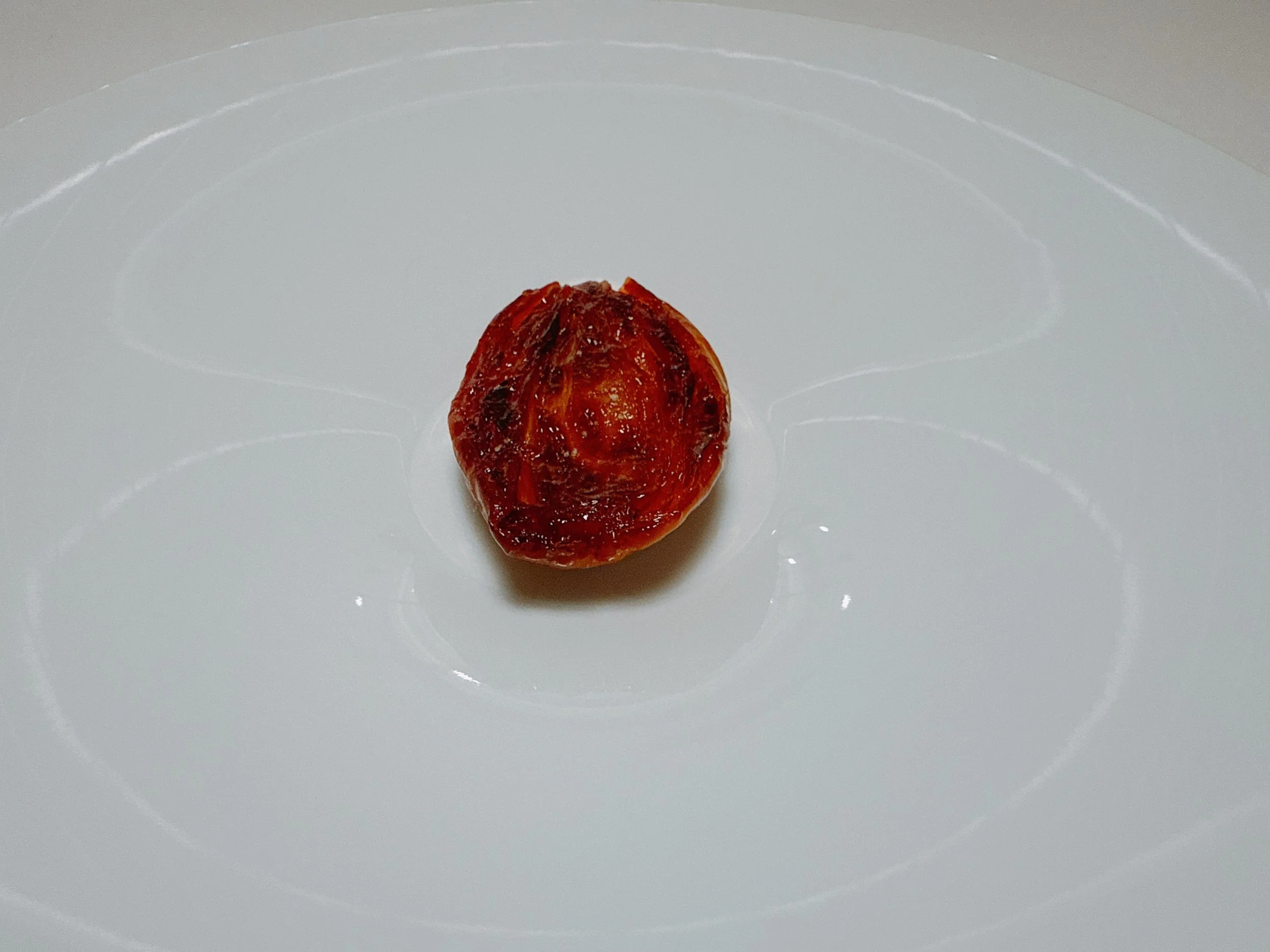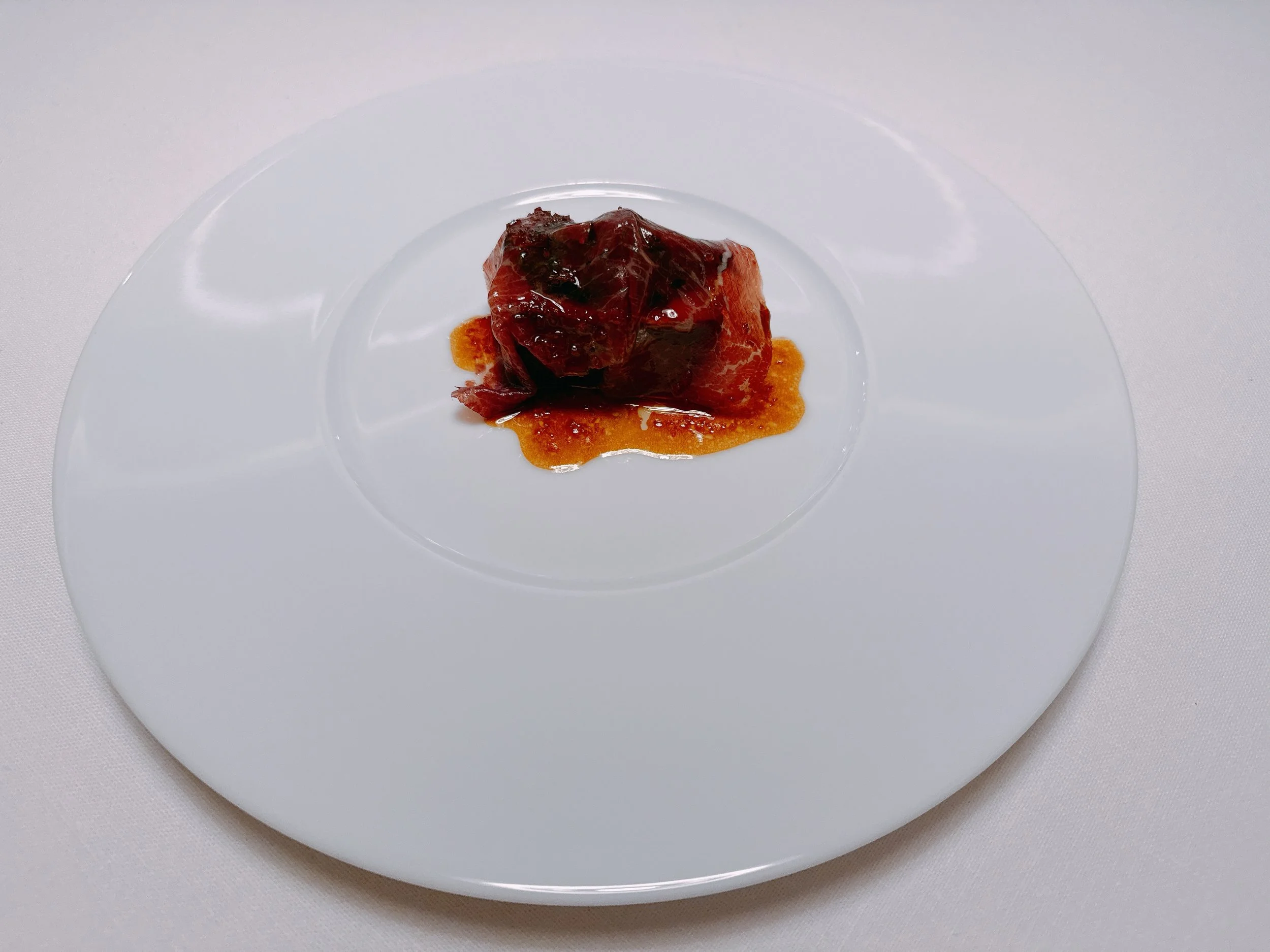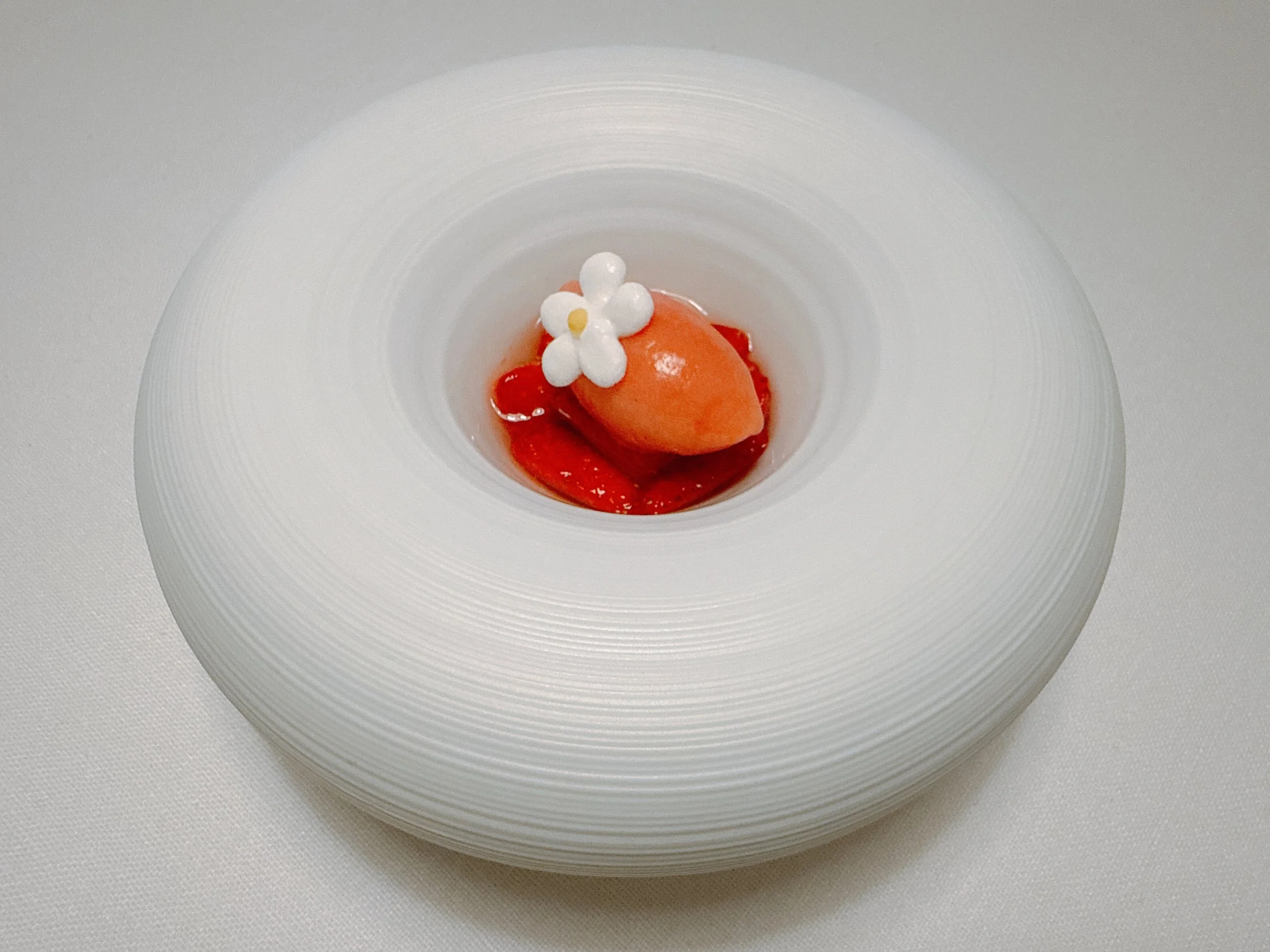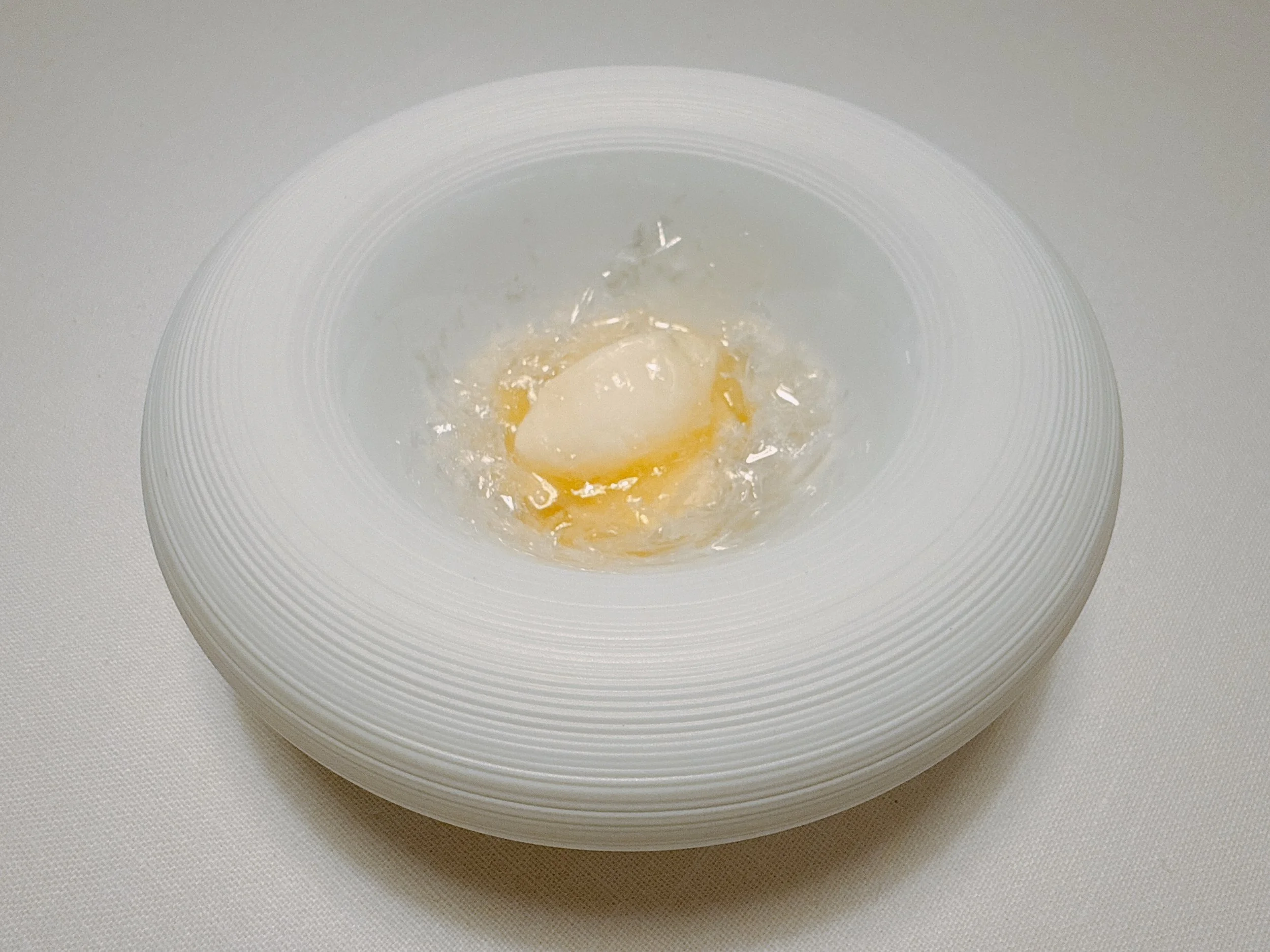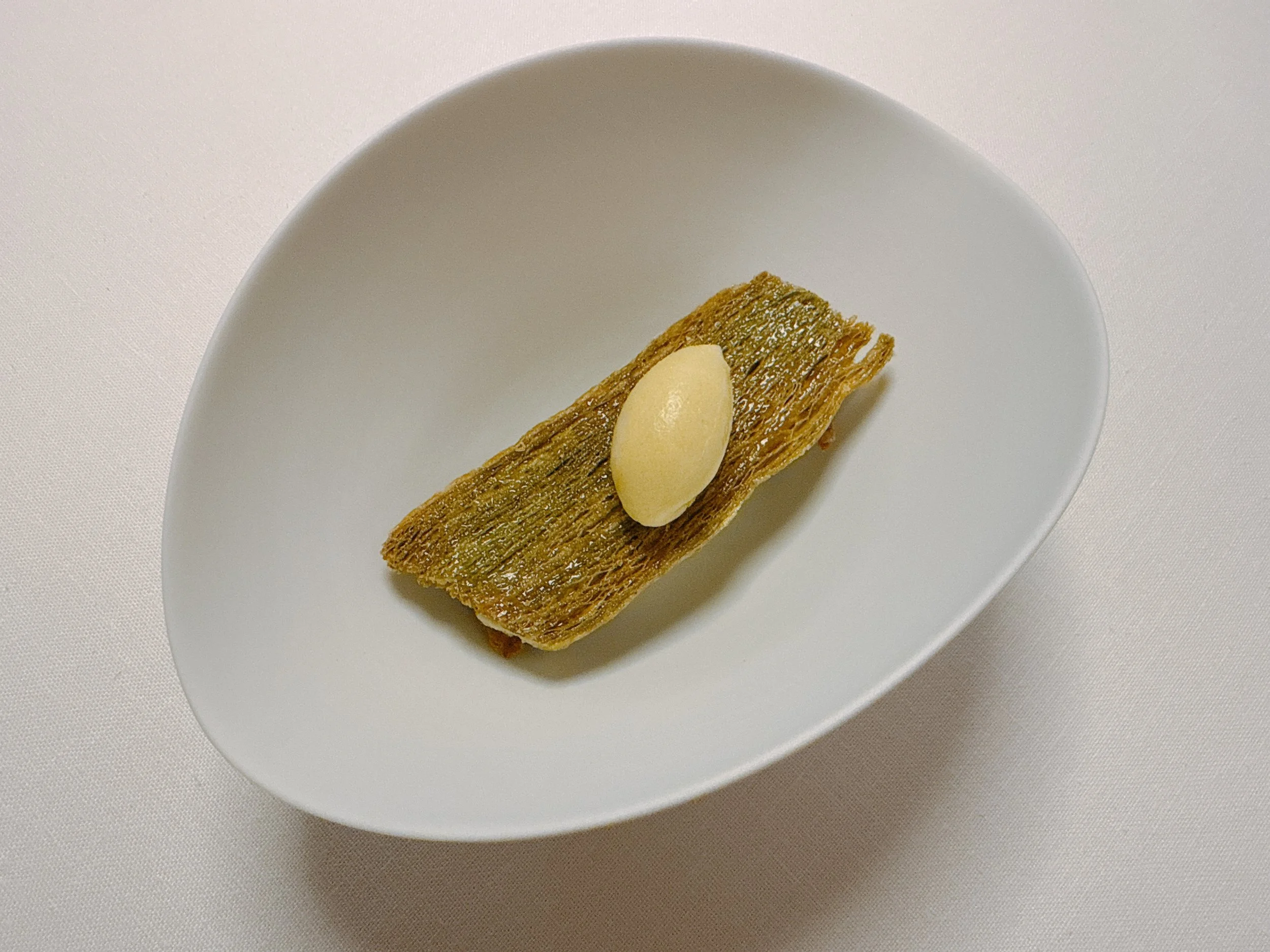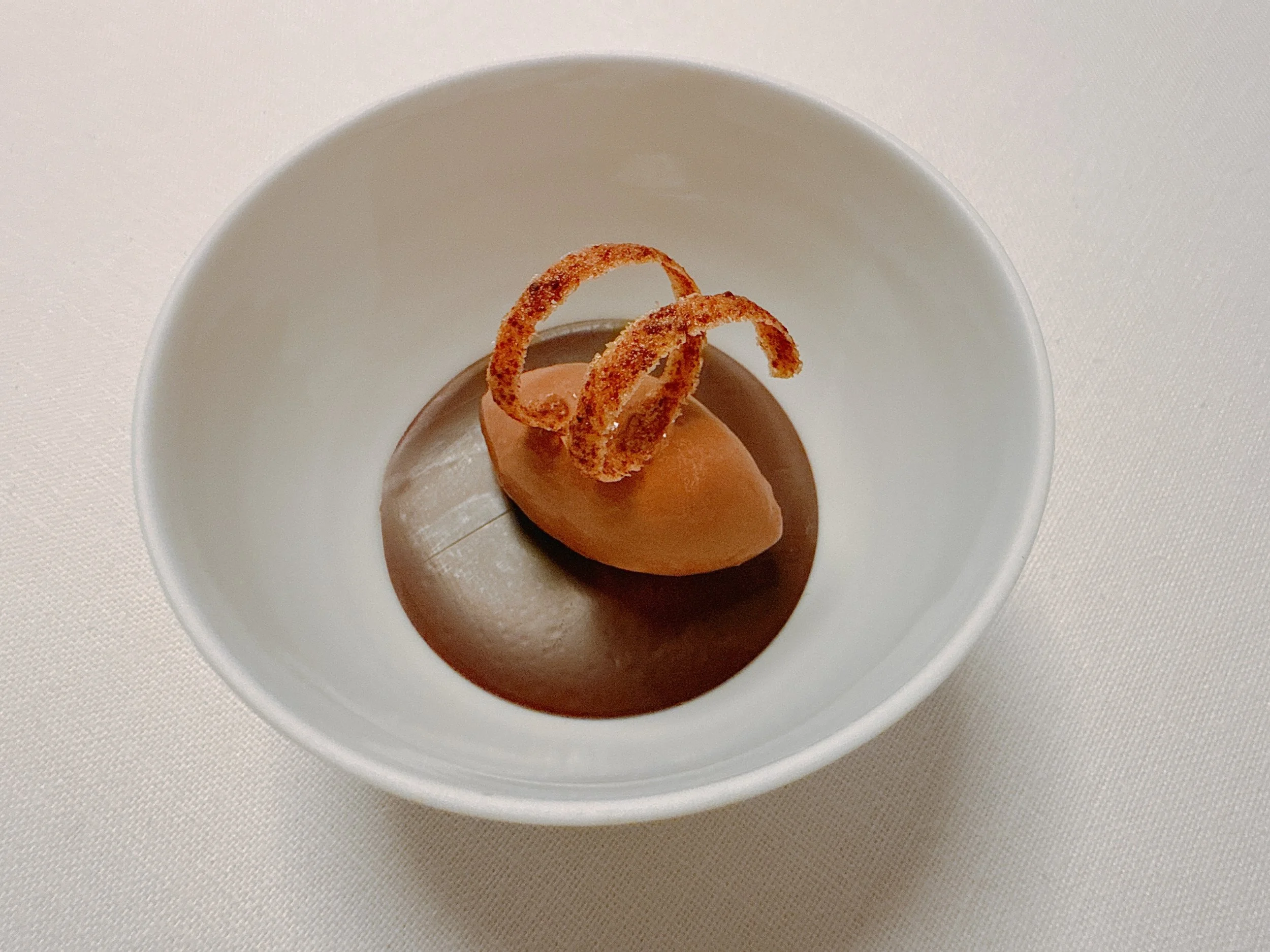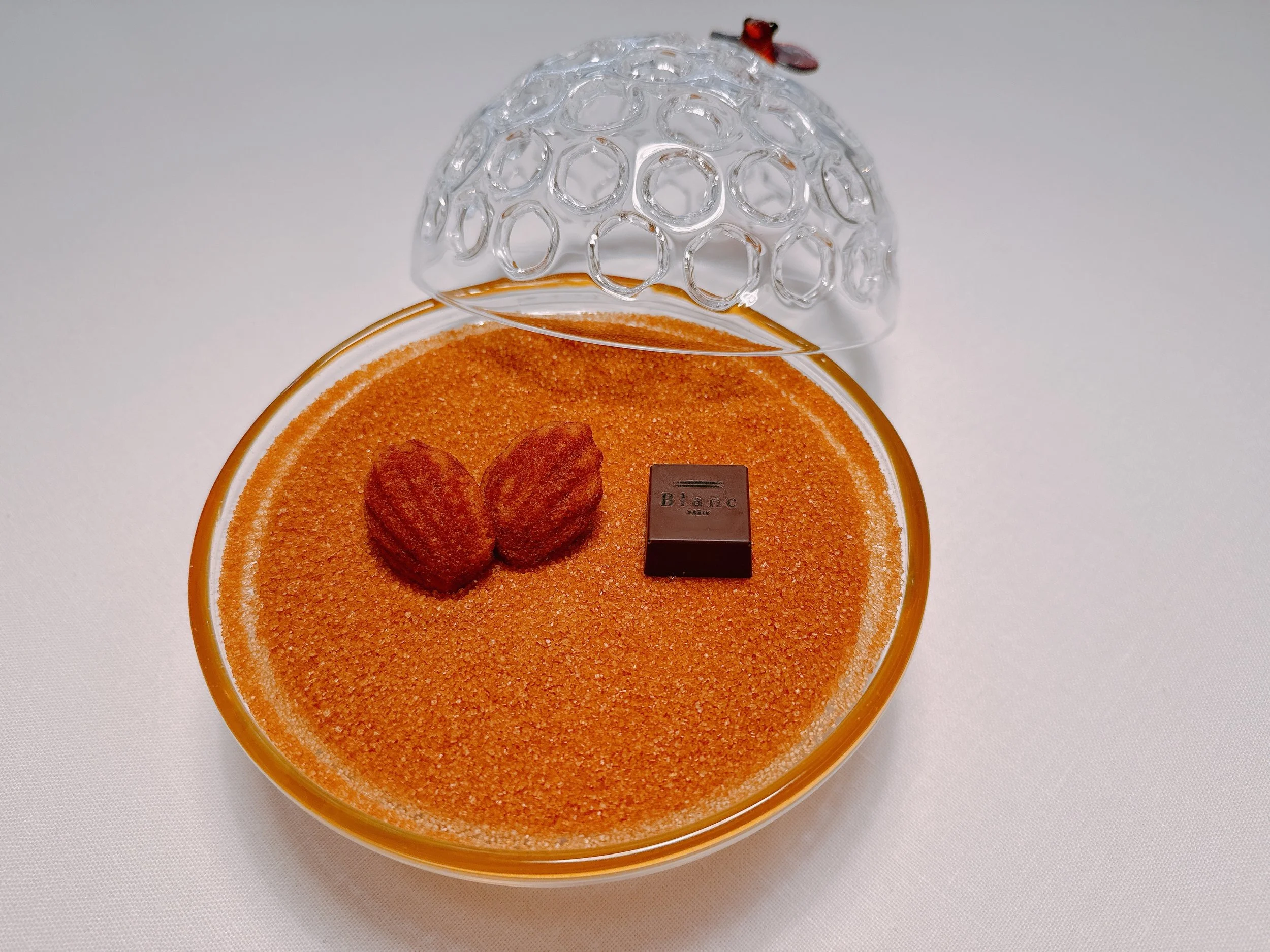Blanc - Paris
Rating: 16/20
Where: Paris, France
When: Dinner for 1 on 24 April 2025
Cost per Person: Tasting menu 260-450 Euro, Wine pairing 100-180 Euro
Accolades: 2 Michelin Stars
Why: French cuisine with many unique, creative dishes that nevertheless felt classical
Paris has an abundance of good restaurants to choose from. So when I had a couple of free nights in the city, I chose to venture a bit off the beaten path and went to the two restaurants that had just been elevated to two stars by the latest Michelin Guide. Some might say that restaurants with one or two stars are more dynamic and take more risks than their three-starred cousins. Moreover, during the past year I've almost always had great experiences at newly elevated two stars, but only about half the time at newly three starred restaurants (admittedly starting with slightly different expectations). That's what led me to make a reservation at “Blanc”, a French restaurant run by a Japanese chef located three Metro stops south of the Arc de Triomphe. That was pretty much the extent of my knowledge when I ran from the Metro stop to the restaurant, a couple of minutes late for my 7pm reservation.
At first, I missed the restaurant, and had to backtrack my steps to find the number 52 on a featureless brown storefront - neither signs nor windows were in sight. Only when I entered the restaurant, I finally saw its name, printed on the doormat. Something that you'd only notice if you were already in the right place. Oddly, there was a Michelin two-star plaque at the door, but for the year 2019. Had the restaurant lost its second star just to regain it in 2025? Due to my (intentional) lack of research, anything seemed possible. My next surprise was that I was greeted by name. At first, I figured that I was probably the only party of one that night, and the staff made an educated guess. The reality was much more surprising. I was in fact the only diner at the restaurant that night, period. I've managed to be in the only party to eat at a two-star restaurant, but had never been the only diner by myself. When I asked how this was possible, I was told that during the Easter vacation, business generally slows. I guess that “Blanc” is not (yet) high enough on the average food tourist's radar, so with the vacation-induced lack of locals, there was only me. I immediately had a bad conscience - the entire staff could have had the night off if it wasn't for me. But if I left now, there wouldn't be any income for the restaurant either, so I was along for the ride. This is what celebrities must feel like when they buy out a whole restaurant to enjoy an undisturbed dinner.
I was offered my pick of sitting literally anywhere inside the restaurant - at the bar counter that I had originally reserved, at any seat in the dining room, or at the chef's table in the kitchen. I picked the latter - at least I wouldn't be in a room all by myself for several hours. The dining room and kitchen were modern and sported a minimalistic design, all kept in light colors; the kitchen in particular was entirely white - maybe in reference to the restaurant's name.
The staff handled the situation graciously, doing their best to make me feel welcome, always ready to chat about the food and its preparation. The dishes might have come a tad faster than would have been ideal, but with a whole kitchen cooking for a single person, how could they not. And I really didn't want to keep anyone around longer than strictly necessary, so that was fine by me.
Speaking of the food, there were three tasting menus to choose from: an abbreviated menu for 260 Euro, the “regular” menu for 360 Euro, and an extended menu for 450 Euro. The latter included three signature dishes that one could add to the other two menus for 30-80 Euro each. Unusually, all three menus contained the same amount of food, which was accomplished by shrinking the portion sizes for the longer menus. I think that is a terrific idea, one that I wish other restaurants copied. I'm all for trying as many dishes as possible, but don't like feeling like a giant blob after a long dinner. So naturally, I settled on the longest menu. There were wine and, unusually, spirits pairings of three or five glasses, priced at 100 and 180 Euro, respectively. I went with a champagne aperitif and the five glass wine pairing, which I am happy to report consisted of pretty good wines. They were all French: a white and a dessert wine from Alsace and two whites and a red from Burgundy. Definitely worth considering.
The first course was a trio of small bites, presented on a plate that had a glass flamingo on it - a curiously goofy design for a restaurant that otherwise had such a minimalist decor. First, I tried a little sphere filled with carrots and red oolong tea. Served slightly cold, it was definitely a mix of flavors - maybe of tea with an aftertaste of carrot. A bit confusing - without the explanation I wouldn't even have begun to guess at the ingredients 15. After that, there was a little tart with peas and lovage. The fresh, popping peas were quite nice, but did not have a very strong pea flavor 16. Finally, a tartlet filled with spider crab and ginger. This bite had by far the strongest flavors among the three - a very pronounced crab flavor, to be precise. Seafood of good quality, lovely 18.
Shortly thereafter, the wine pairing started. Foodwise, raw and cooked squid was seasoned with horseradish and topped with a thinly sliced, 24-month-aged Parma ham. The squid was served warm, and something about its preparation reminded me of good squid sushi. The ham mostly added a bit of saltiness. Despite its simple presentation, the flavors of this dish were quite elegant 17.
Next, a fried eel came with rhubarb prepared three ways: pickled, as a confit and as a juice. The rhubarb was nice enough, leaning towards sweet, but still with acidic notes. The eel, however, the only warm part of the dish, was less impressive. It had been fried to be very crunchy and a bit fatty, so that it provided mouthfeel and texture, but barely any taste. Maybe if there had been more meat relative to its crunchy exterior, this would have been a more interesting dish 14.
One of the chef's three signature dishes arrived next. At the bottom of a cocktail glass sat a generous helping of imperial osetra caviar. On top of it was an ice cream made from a “No. 0” (i.e. very large) oyster finished with a few drops of whiskey. This dish was inspired by a trip that the chef took to Scotland. On that trip, he was served a (fresh) oyster seasoned with whiskey instead of the more traditional choices, such as lemon juice or a mignonette. Fittingly, this dish was paired with a 10 year old Scotch, the same that was used in the dish (unfortunately, this was not part of the wine pairing, but cost extra). The best part of this dish might have been the caviar: creamy and salty, I would have happily eaten a lot of it, and thankfully this was a large serving. The oyster ice cream added a more pronounced sea flavor the dish, reminding me of crashing waves. A simple looking, but quite delicious dish. It was impossible to taste the whiskey directly in the dish, but the paired whiskey was pretty nice - not too strong, and almost a bit sweet when combined with the food 18.
The next course was somewhat unusual for a French tasting menu: a Bresse chicken consomme with almond oil and small turnips. Essentially, this was a French take on the Japanese tradition of serving a clear soup during a kaiseki meal. (My server informed me that it was also intended as a palate cleanser.) The broth was served very hot, and was more a subtly seasoned soup rather than a “mere” chicken broth. The turnips were very juicy and suffused with vegetable flavors 16.
The main bread serving of the evening was a warm focaccia made from classic flour and potato pulp. It came with an olive oil from Mallorca - very flavorful and elegant, neither sharp nor green in flavor. The bread had a more neutral taste, but the two went together pretty well 16. (Later in the evening, I was served another slice of bread, but I didn't get an introduction, and in fact didn't even notice its addition to my bread plate. It had a bit more flavor, but not much.)
A filet of turbot was served with clams, beans, onions (I think) and a sauce that had been made almost exclusively from the turbot's collagen (plus some salt, herbs, and sansho pepper). Given the sauce's creaminess, it was hard to believe that it contained neither butter nor cream. The fish had a firm texture, and the clams were cooked perfectly - tender with a light clam taste. The sauce combined a light seafood flavor with herbal notes - very nice. I kind of wished that this dish hadn't come with the numbing sansho pepper, so that its flavors very less overpowered. That might have increased the score by one 17.
White asparagus was topped with some suckling lamb and watercress, and surrounded by a kombu sauce. On the side was some shredded pecorino, that could be added as desired. Without the cheese, this dish was very light in flavor - which was no surprise regarding the asparagus, but a bit more so for the lamb. It felt almost as if the meat's flavor had been cooked away. Adding the cheese improved the dish, the combination of its saltiness and fat made the asparagus' flavor stand out more, putting it front and center tastewise 17.
Green asparagus tempura was served with a Comté cheese sauce and some finely chopped shungiku. The star of this dish was the cheese sauce. Bursting with flavor, it was amazing, I could have eaten it all by itself. The shungiku was a nice, herbal-tasting addition, but the green asparagus was a letdown. Served very hot, it didn't have much flavor and the tempura batter was somewhat oily. Without the asparagus, I might have rated this dish an 18, but with it, the result was much less exciting, maybe a 15. Arguably, one didn't have to eat the asparagus, though, so 17.
A three-day-cooked veal breast confit was served with baby potatoes from Noirmoutier, morel-stuffed morels and a sauce made from breadcrumbs, butter and oil. On top of the dish was a mushroom emulsion. The meat was very tender and had a distinctive and delicious veal flavor - by itself maybe an 18. The rest of the dish was still good, but slightly more “standard”. The breadcrumbs were nicely buttery and added a bit of texture, the buttery morels were quite tasty as well, but the potatoes were not particularly flavorful - they were just, well, potatoes. An upscale take on meat and potatoes 17.
The last two savory dishes were again optional additions for the shorter tasting menus. First, a caramelized onion that had been taken apart, layer by layer, before being reassembled with chorizo slices in between the onion layers. (I had recently seen a similar presentation, but using truffles instead of chorizo, at Odette in Singapore.) This dish was served very hot, and the onion was very sweet, not sharp or spicy at all. So even though there was a hint of chorizo flavor, it was overpowered by the caramelized onion, making this practically a dessert course. I love onions and chorizo, but I would have preferred them in a savory dish 15.
Finally, a filet of Galician beef that had been cooked over a binchotan coal grill and then topped with spring garlic and a slice of beef “ham”. On the side was a beef jus. In essence, this was beef prepared three ways plus some greens. The filet was fine, but parts of it were very chewy. Since it was pretty lean, it actually tasted better when eaten together with the ham - the latter provided some fat, more beef flavor, and an almost candied texture - yum. I wonder if more marbled, or more flavorful beef would have improved this dish 16.
Then it was dessert time, led off by a pair of dishes. One of them was made with strawberry ice cream, strawberries, bay leaf panna cotta and tomatoes. The ice cream was delightfully sweet, the strawberry pieces a bit less so. The bay leaf panna cotta, though, tasted oddly savory. Things got a bit better when one ate everything together, but the bay leaf still had a considerable effect on the overall flavor 14. The second dish was better: lemon ice cream and a lemon sauce, served with a cookie and sugar paper. This was meant to resemble a lemon pie, and tastewise, it wasn’t too far off the mark. The cookie was nice, the citrus ice cream light, the lemon sauce somewhat heavier, and the sugar sheets added some crunch. Not a complex taste profile, but quite enjoyable 17.
Another pair of desserts followed. A millefeuille came with a verbena mousse and a topping of kiwi ice cream. The kiwi ice cream was quite good, and the dish overall much lighter than it looked. A good combination of mousse, crunchy millefeuille and cold ice cream 16. The other dish was heavier in principle, but also so small than it didn't really matter. Dark Colombian chocolate (72%) came as an ice cream over a layer of chocolate and a chocolate mousse. Not a particularly sweet dish, this was more of a meditation on a savory cocoa flavor 15.
A final pair of sweet bites finished off the night. A madeleine with lychee honey was sweet with a light crunch 16. A Colombian chocolate praline was filled with a liquid rum-based filling. Nice enough, with a clear rum flavor 17.
And just to resolve the earlier mystery: during the dinner, I inquired about the 2019 Michelin two-star plaque. It turned out that it was from the chef's previous restaurant, where he also had held two stars. When he received the two stars for Blanc, he preferred to mount the 2019 two-star plaque rather than the “old” 2024 one-star plaque. Presumably only a temporary issue until the new plaques are shipped.
Throughout the dinner, the chef himself was an enigmatic presence in the kitchen. He looked stern the entire time, and never came over to say hi. My “domo arigato” upon leaving was met with the same frozen stare. Maybe one person was still upset with me for single-handedly keeping the restaurant open for the night?
Overall: A delightful dinner of French cuisine with many good dishes. The creativity at play here was particularly notable - there was barely any dish that could have been considered “standard”. But even though the chef was Japanese, the whole dinner squarely remained in the realm of French cuisine; there was no “fusion cuisine” and almost no Japanese influences (fewer than at many other French restaurants, in fact). Food- and service-wise, there was definitely no good reason why this restaurant shouldn't have had many more diners on this night in April. A strong 16.
